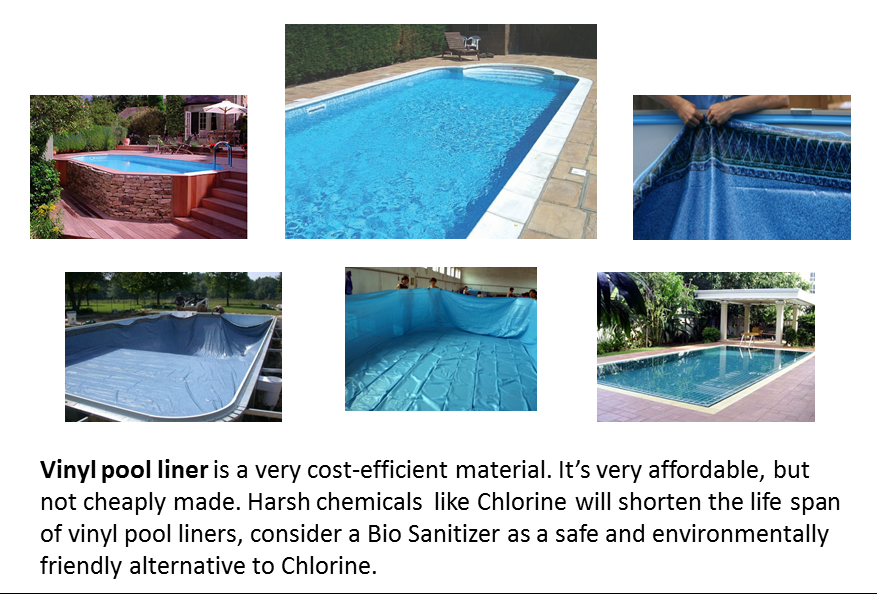
One thing every pool has in common, whether it is above-ground or in-ground, is that every pool has some kind of liner in it. While a few of these pools may have a special kind of liner, such as tile, natural rock, heavy-duty liquid coating or even marble, most pools have a simple vinyl liner.
Why vinyl? Well, for one thing vinyl is a very cost-efficient material. It’s very affordable, but not cheaply made. Harsh chemicals like Chlorine will shorten the life span of vinyl pool liners, consider a Bio Sanitizer as a safe and environmentally friendly alternative to Chlorine. However, if you do own a pool that’s older, your vinyl siding may be starting to peel. As the liner becomes more and more flaky, the water can have adverse affects on the inner walls of the pool. After just so long, the vinyl will start to crack and peel and will need to be replaced.
While you can both remove and install the vinyl pool liner yourself, many people often find it easier to hire an outside company to come in and do the manual labor. However, if you insist on doing it for yourself, be forewarned that you are in for a lot of hard work. Between the measuring and draining of the pool, the removal of old liner, the re-smoothing of the pool’s floor, and the eventual installation of the liner itself, you are looking at well over a weekend’s worth of work. If you are doing this with only a friend to help, or by yourself, it could easily take longer. If it’s in your budget to hire someone to do all the manual labor for you, do so. They’ve been doing liner installations for many years, and you’re guaranteed a professional level of work.
So why would you want to go with vinyl lining for your pool? Technology has advanced considerably since the last time your pool was lined. New linings are protected against chemical degradation, adding many years to the life of your vinyl. Previously, the chemicals in chlorine that many pools use to keep clean and safe from disease-causing bacteria would eat away at the vinyl, which is why it would turn brittle. Also, new advances in coloring and coating makes modern vinyl pool lining resistant to color fading from the sun’s ultraviolet rays to ensure that your pool will always maintain that colorful, fun look and feel.
There are other items that can help insulate your pool. For instance, many above-ground pools require a pool cove to help ensure the even distribution of weight as the water splashes around. This not only helps to prevent leaking at a vital point in the pool wall, but also ensures that you don’t have any freak toppling or spillages from the pool wall breaking. Another method to help increase the life of your pool wall is the use of wall foam. Wall foam is 1/8th inch thick foam padding that you line the innermost parts of your pool wall with. The foam helps to protect and prevent rust, corrosion of either the wall or the liner, and other degradation. It also helps support your pool’s structure, adding extra strength to the walls to support the weight.
No matter if you take every precaution in the book, or if you just want a quick fix, pool liners are an essential consideration in the construction, maintenance and use of any pool.
Swimming Pool Liner Manufactures:
Kayden Manufacturing
Garrett Liners
Imperial Pools
Kafko True Fit
Vynall Custom Pool Liners
